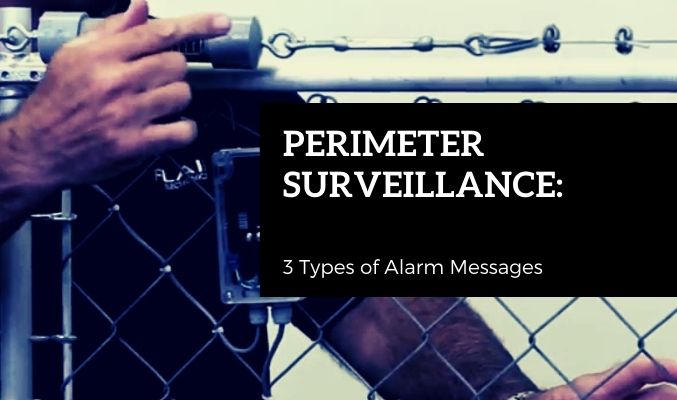

Perimeter surveillance systems use a variety of alarm message types to report activity to the monitoring station or personnel. Knowing when each type of alarm message is used is important for protecting your premises/personnel from false alarms and prompting the right course of action.
Here are three types of alarm messages in perimeter surveillance:
A perimeter message can be caused by an intruder who has entered the protected area or by an object or animal that has moved within the protected area.
In addition, a perimeter message can be caused by acts of god such as wind and lightning. These types of faults are known as false alarms because there is no risk of intrusion and therefore no need for intervention by the security service.
The alarm verification process must therefore ensure that an alarm message is only sent if there is a risk of an actual intrusion. This requires that any disturbing factors are filtered out during the alarm verification process. Perimeter messages can cause problems in two areas:
The reaction time must not be increased by the time it takes to carry out the verification process – this would open up a window of opportunity for intruders.
The verification process should not result in any unwanted alarms (false alarms) being sent out through the detector/sensor configuration, as this would distract security personnel from real risks.
A sabotage alarm message is created when an alarm event occurs at an object. This type of alarm must be differentiated from all other types of messages.
Sabotage messages must be processed directly by the security personnel and must not be confused with other types of alarm messages (e.g. faulty alarm, test alarm etc.).
When transmitting these messages, the control room has to use a separate line for communication (e.g. telephone line, mobile radio system, GSM modem) and not send them via the same line used for routine communications with the security personnel, so that they are not overlooked.
When there is a fault in the perimeter protection and detection system, fault alarms will be issued by the control center or electronic fence alarm processing unit.
Common faults include short circuits, grid failure, defects in the processing units, and more.
When the fault alarm message arrives at the alarm management platform of the control center, it will generate an alarm ticket. After receiving the alarm ticket, the security staff conducts an inspection. After determining that it is a fault alarm, they can directly turn off (restore) the corresponding connection switch in the site cabinet to eliminate this kind of false alarm.
When there is a fault in a peripheral device (such as a photoelectric detector), it can also generate a fault alarm message. Such fault alarms should be eliminated through normal maintenance methods.
The perimeter system will use multiple types of alarm messages to keep you alerted of unusual activity around your property. Make sure that you learn the purpose of each message and how to recognize them. It’s the most essential part of ensuring the property is well-protected.